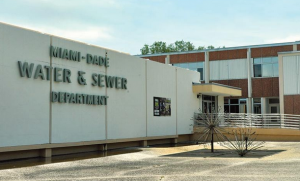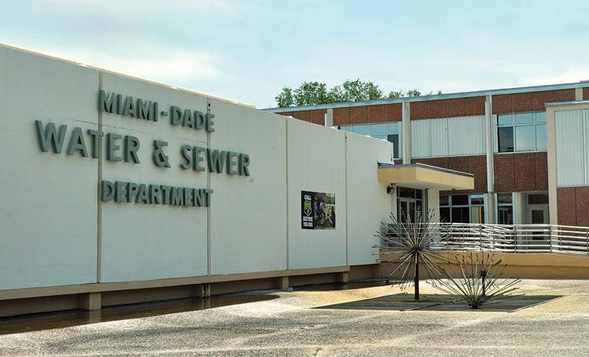During the next two decades or so, the Miami-Dade Water and Sewer  Department will undergo and oversee the largest capital improvement program in the county’s history — with $13.5 billion in projects just in the southern part of the county.
Department will undergo and oversee the largest capital improvement program in the county’s history — with $13.5 billion in projects just in the southern part of the county.
Members of the public will get a chance to hear about these projects — which include the replacement and/or improvement of water and sewer lines and state-of-the-art upgrades at six water and sewer plants and pump stations — and ask questions at an open house meeting Thursday with Commissioner Daniella Levine Cava.
She admits that she knows little about these projects and is going to become more educated herself on Thursday.
But she knows that the object of the plan is to increase service capacity that will support more businesses to open in the community — some of whom are denied permits based on water capacity — improve the reliability and sustainability of the water and sewer system and provide for environmental regulatory compliance and enhanced fire protection.
Read related story: Bill Johnson leaves county nest just as billions get ready to fly
The conversation will not only be about how the projects might disrupt  traffic flow in certain neighborhoods but will also give vendors, Levine Cava said, a chance to hear about potential jobs that might be contracted out.
traffic flow in certain neighborhoods but will also give vendors, Levine Cava said, a chance to hear about potential jobs that might be contracted out.
The capital improvement program is is projected to generate close to $25 billion in “economic output” and create at least 16,000 jobs during the first decade alone. Cava said she was particularly interested in more details about the jobs.
WASD staff will be at the meeting from 6 to 8 p.m. Thursday at Cutler Bay Town Hall, 10720 Caribbean Blvd., to present an overview of upcoming projects in the region and answer questions. Doubtful that the new department director, Lester Sola, is going to be there; he leaves the next day for Paris.
Read related story: Miami Dade mayor, lobbyist pals head to Paris Air Show
Ladra wants to know how they reached the projection that these projects will create 16,000 jobs. And what kind of jobs are those? And who gets them? Also, how do they determine that the “economic engine” that is the capital improvements program will generate $25 billion in “economic output.”
And will the bidders on that new reverse osmosis plant planned for South Miami Heights include the ones who built the similar station in Hialeah that has yet to operate correctly or produce clean water regularly?
And, last but not least, what are the funding sources for these improvements, which we suspect includes rate increases?

